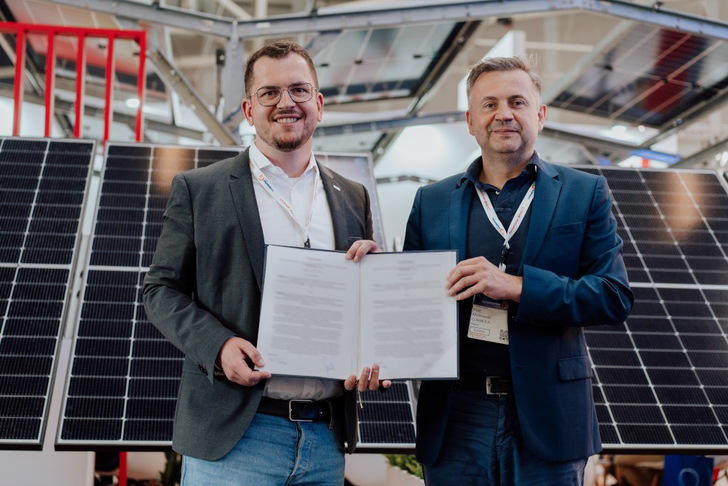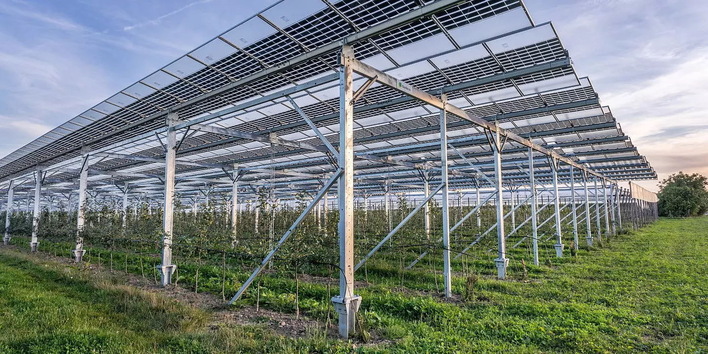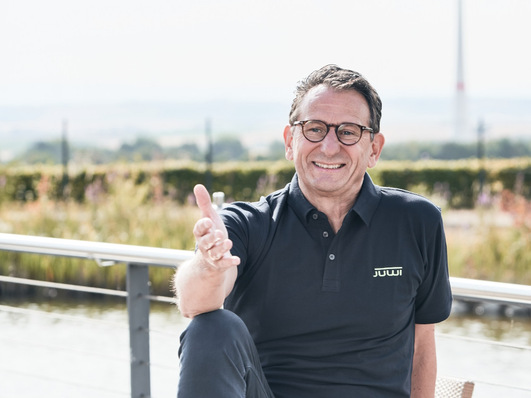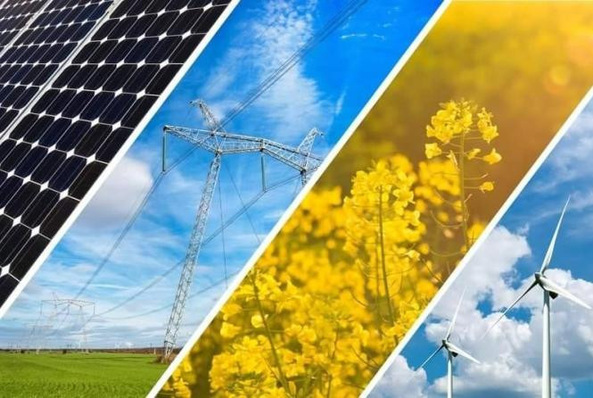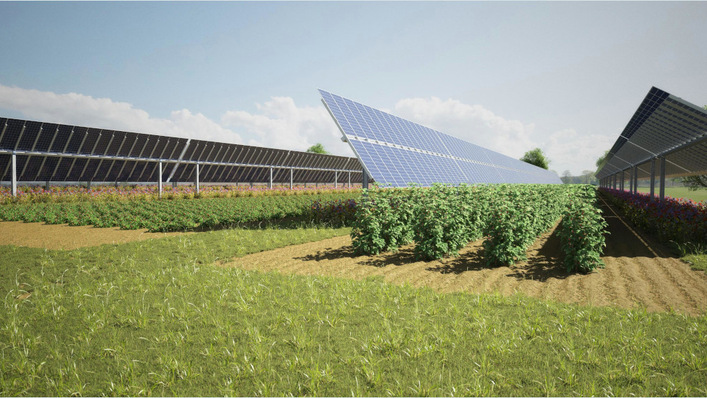Corab S.A. and Kelfield signed a letter of intent based on which the companies will jointly complete agrovoltaic projects with the target total power of more than 1 GW. Corab will contribute its know-how and technological solutions dedicated to the Agro-PV segment, while Kelfield will be responsible for engineering works and handling the investment process, including acquisition of investors and obtaining of necessary permits. This will be the largest agrovoltaic investment on the Polish market. The value of components used in its completion alone is estimated at about PLN 300 million.
Fence-shaped vertical structures
The project, with the target total power of 1 GW, will use Corab System WS-A10 fence-shaped vertical structures. The installations will be located on agricultural land which is very difficult to cultivate or completely unsuitable for that purpose and used as meadows and pastures. Free-standing agrovoltaic systems of this type occupy about 1% of the field area, so they work well even on small farms. The remaining area can be used according to its primary purpose.
"We are pleased that together with Kelfield we will open the Polish market to agrovoltaics, and that Corab's solutions in this segment, which we have exported to the West so far, will be implemented also in our country”, says Piotr Markowski, President of the Management Board of Corab S.A. "We hope that the first gigawatt project will be followed by others, which will allow us to use the potential of this technology also for classic agricultural crops, of which we have plenty in our country. However, this will require introduction of several amendments to the law, which are necessary to make this type of activity in Poland both feasible and profitable," added Piotr Markowski.
Did you miss that? New digital platform on agri-PV and a guide on the topic published
"We plan to start the project in the Pomeranian and West Pomeranian provinces and we are looking there for investors interested in agrovoltaics, offering farmers the possibility to combine agriculture with energy production”, says Hendrik Von Wieding, President of the Management Board of Kelfield. "Agrovoltaics not only provides additional income, but also contributes to improvement of the environment, which is why we believe our activities offer a unique development opportunity for both Polish farmers and entire regions", adds Hendrik Von Wieding.
Still lack of suitable regulatory environment
Agrovoltaics is a dual activity, consisting in the use of one area of land for agricultural production as the main purpose and for the production of electricity through a photovoltaic installation as the secondary purpose. Importantly, unlike classic PV installations, the placement of agrovoltaic systems does not result in the exclusion of the land from agricultural production. This type of activity brings many benefits for farmers. It makes it possible to self-consume the electricity generated, thereby significantly reducing the costs of farming operations and increasing the competitiveness of the products offered. It can also constitute an additional source of revenue. In addition, agrovoltaic installations protect crops from destructive weather phenomena such as heat, hail, gales or storms. As distributed sources, they also directly support local and indirectly national energy security. Due to these advantages, the technology is developing rapidly throughout the world, among others in the USA, France, Japan, China and Korea.
Watch our video pv Guided Tours: AgriPV - Transparent complete systems für farmers
On the Polish market, due to the lack of a suitable regulatory environment, agrovoltaics cannot yet develop its full potential. It is, however, undeniable - Poland ranks third in Europe in terms of the share of agricultural area. For this to happen, it would be necessary to include dual use of land in planning permissions and local spatial development plans, to eliminate the requirement to exclude land from agricultural production in order to carry out electricity generation activity, and to maintain direct subsidies for such activity, which follows directly from EU regulations. (hcn)


